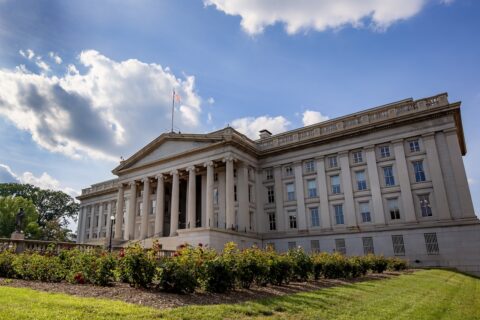Bingham Township in Pennsylvania, a rural community with just over 600 residents, is eligible for $69,000 in State and Local Relief Funds (SLFRF) through the American Rescue Plan Act (ARPA).1 However, the residents and businesses will not benefit from this relief package because the Township declined their SLFRF allocation from their state.
To understand whether the instance in Bingham indicates a broader trend across communities, the National League of Cities (NLC) collected data on ARPA relief fund eligibility to small municipalities, or non-entitlement units (NEUs), in 15 states and analyzed the allocation amount and population size of those communities declining funds. We find that it is extremely rare for NEUs to actively decline their SLFRF funds as most small cities, towns and villages requested the allocation from their state. Of the states included in the sample, only 0.29 percent of funds available to NEUs were declined.
SLFRF provides $350 billion in direct funding to state, counties, cities, Tribal governments and other eligible local government entities. Of the $65.1 billion available for municipal governments, SLFRF allocated $19.5 billion to non-entitlement units (NEUs) –cities, towns and villages with populations less than 50,000—and the remaining $45.6 billion to metropolitan cities.2 While metropolitan cities received SLFRF allocations directly from the U.S. Department of the Treasury (Treasury), Treasury distributed SLFRF for NEU to each state for redistribution to NEUs within their state. To receive their allocations, NEUs need to contact their state entity administering the funds.3 As a result, NEUs have the option to actively decline funds or passively decline funds by not contacting their states at all to request funds. NEUs that decide to decline their SLFRF allocation can transfer the funds back to the state by submitting a signed notice. However, if a NEU does not submit the signed notice, their SLFRF allocations “will remain legally obligated under the award with respect to accounting for the uses of the funds and the reporting on such uses.”4
To better understand the scale and magnitude of NEUs declining SLFRF and identify any trends among those NEUs, NLC collected data regarding NEU fund dispersal status from 15 states (see Figure 1 for the list of included states). The 15 states in our sample represent 38 percent of funds allocated to NEUs ($8.12 billion) and 43 percent of all NEUs (9681 NEUs). Between August and December of 2021, NLC collected the dispersal status from publicly available data portals, state municipal leagues and other sources (See appendix for publicly available data related to the dispersal of funds to NEUs).

Figure 1: States included in declined funds analysis, and total number of NEUs within those states. States include Arkansas, New Jersey, Alabama, Kentucky, Utah, Washington, Florida, Kansas, Georgia, Maryland, Wisconsin, Idaho, Michigan, Texas, New York, and Maryland.
Note: A handful of states included in the sample did not delineate whether the NEU actively declined funds or was non-responsive. Those states are Illinois, Florida, Kansas, New York, Alabama and Maryland. Additionally, a few states did not provide allocation amounts for NEUs which declined funds. For those NEUs, we estimated their allocations by averaging NEU allocations per capita of NEUs within those states, multiplied by the 2019 population. Those states are Florida, New York, Arkansas and Maryland.
Key Findings:
The vast majority of NEUs applied for SLFRF funds through their states.
- Of the 9,681 NEUs included in our sample, only 243 NEUs actively declined funds, representing 2.51 percent of NEUs.
The total funding amount declined is relatively small compared to the overall SLFRF allocations for NEUs.
- The cumulative amount of funds declined by the 243 NEUs is $23.5 million, representing less than 0.29 percent of SLFRF funds available for NEUs in the sample.
The NEUs that did actively decline funds rejected relatively small amounts of funding.
- Of the sampled NEUs, the median amount of funds declined is $34,204 and the average amount of funds declined is $96,365.
The populations of NEUs that actively declined funds are relatively small.
- Of the sampled NEUs that declined funds, the median population size is 210 and the average population size is 561.
Our analysis finds that the vast majority of sampled NEUs did request funds from their state and the occurrence of an NEU actively declining funds is extremely rare. Additionally, the small population size of the NEUs that declined their SLFRF allocation indicates that limited staff capacity and lack of experience with federal programs is likely a contributing factor for rejecting the funds. For municipalities that have capacity concerns, there are opportunities to use these funds to grow that capacity through their SLFRF allocation. The eligible uses for SLFRF funds include some of the administrative costs associated with the management, use and reporting of the funds.5 Additionally, for municipalities that received relatively small allocations, NLC recommends working with encompassing counties, or neighboring cities, towns and villages, to leverage these funds for greater impact. Regardless of the size of the municipality or the allocation amount, all cities, towns and villages should take advantage of this tremendous opportunity to address economic and public health disparities onset by the pandemic and tackle systemic issues related to poverty and inequality that the pandemic further exacerbated.
Appendix:
Publicly Available Sources for NEU SLFRF Dispersal Status:
Footnotes:
- 1 Quinton, Sophie (Sept. 2021), Why some small towns are turning down federal COVID relief funds during the pandemic, USA Today
- 2 https://home.treasury.gov/policy-issues/coronavirus/assistance-for-state-local-and-tribal-governments/state-and-local-fiscal-recovery-funds
- 3 https://home.treasury.gov/system/files/136/NEU_Guidance.pdf
- 4 https://home.treasury.gov/system/files/136/NEU_Guidance.pdf
- 5 https://home.treasury.gov/system/files/136/SLFRF-Compliance-and-Reporting-Guidance.pdf








